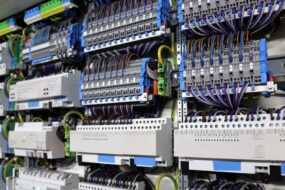
In the dynamic landscape of technology, spatial computing has emerged as a game-changer, reshaping our understanding of augmented reality (AR). As we delve into this revolutionary realm, we explore the features that are not merely transforming but redefining augmented reality, with a particular focus on its implications for virtual private server hosting.
The Spatial Computing Landscape: A Brief Overview
Spatial computing, at its core, involves the integration of digital information into the physical world, enhancing our perception and interaction with our surroundings. Augmented reality, a prominent subset of spatial computing, overlays digital elements onto the real world, offering a seamless blend of the physical and virtual realms.
Evolution from AR to Spatial Computing
The evolution from traditional AR to spatial computing marks a shift from simplistic overlays to more immersive and context-aware experiences. This evolution is fueled by advancements in sensor technologies, machine learning, and computational power.
Key Components of Spatial Computing
Spatial computing encompasses several key components, including computer vision, depth sensing, and spatial mapping. These components work synergistically to create a dynamic and responsive augmented environment.
Unraveling the Impact on Virtual Private Server Hosting
As spatial computing continues to gain prominence, its impact on virtual private server (VPS) hosting is becoming increasingly evident.
Enhanced User Interfaces for VPS Management
Spatial computing introduces intuitive and interactive user interfaces for managing VPS resources. Users can navigate through their server environments in a three-dimensional space, streamlining the process of resource allocation and management.
Spatial Data Visualization in VPS Monitoring
Visualizing complex data sets is a challenge in traditional VPS hosting interfaces. Spatial computing allows for immersive data visualization, enabling administrators to grasp server metrics in a spatial context, facilitating quicker decision-making.
Real-Time Collaboration in VPS Development
For collaborative VPS development projects, spatial computing provides a shared virtual space where team members can interact with server components in real-time. This fosters efficient collaboration, reducing development time and enhancing overall project coordination.
The Crucial Role of Virtual Private Server Hosting in Spatial Computing
In this symbiotic relationship between spatial computing and VPS hosting, the role of the latter is pivotal.
Scalability for Spatial Computing Workloads
Spatial computing applications often require significant computational resources. VPS hosting offers scalable solutions, ensuring that the infrastructure can adapt to the varying demands of spatial computing workloads.
Security Measures in VPS for Sensitive AR Data
As spatial computing involves processing real-world data, security is paramount. VPS hosting provides a secure environment for handling sensitive AR data, implementing encryption and access controls to safeguard information.
Final Words: Navigating the Future of Augmented Reality in VPS Hosting
In conclusion, the fusion of spatial computing and virtual private server hosting is propelling us into a future where the boundaries between the physical and digital worlds blur. The immersive experiences crafted by spatial computing redefine how we perceive and interact with augmented reality, and VPS hosting stands as the robust foundation supporting these advancements.
Commonly Asked Questions
Q1. Can Spatial Computing Enhance VPS Security?
Absolutely. Spatial computing’s integration with VPS allows for advanced security measures, ensuring the confidentiality and integrity of data within the server environment.
Q2. How Does Spatial Computing Impact VPS Resource Efficiency?
Spatial computing introduces intuitive interfaces for resource management in VPS, enhancing efficiency by simplifying tasks like resource allocation and monitoring.
Q3. Is Spatial Computing Only Relevant to Visual Aspects in VPS?
While visual aspects are significant, spatial computing in VPS goes beyond visuals, offering immersive collaboration and data visualization experiences.
Q4. What Challenges Might Arise in VPS Hosting with Spatial Computing Integration?
Challenges may include the need for optimized hardware to support spatial computing workloads and ensuring seamless integration between VPS and spatial computing technologies.
Q5. How Can VPS Hosting Providers Prepare for the Spatial Computing Era?
VPS providers should focus on offering scalable solutions, robust security measures, and collaborations with spatial computing developers to stay ahead in this transformative era.
Advertisement








